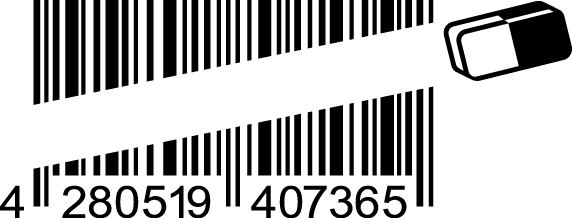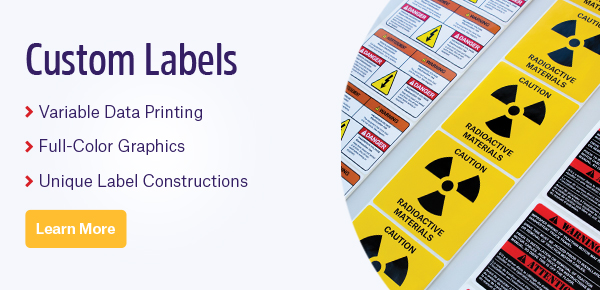 To ensure robustness, some 2D barcodes are equipped with “error correction,” a feature that allows the barcode to remain scannable, even if it has been lightly-to-moderately damaged. This is in contrast to 1D barcodes, which will always become unreadable if any segment of the code is damaged. Error correction is found on QR codes as well as PDF-417, MaxiCode, DataMatrix, and Aztec Code, all of which utilize the Reed-Solomon error correction algorithm. This algorithm adds redundant information to encoded data, allowing the code to be reconstructed, even if it becomes scratched or smudged. The algorithm was originally devised by Irving Reed and Gustave Solomon in the 60s at MIT, which ultimately led to their widespread use in many consumer products, such as CDs, where two interleaved Reed-Solomon codes are used.
To ensure robustness, some 2D barcodes are equipped with “error correction,” a feature that allows the barcode to remain scannable, even if it has been lightly-to-moderately damaged. This is in contrast to 1D barcodes, which will always become unreadable if any segment of the code is damaged. Error correction is found on QR codes as well as PDF-417, MaxiCode, DataMatrix, and Aztec Code, all of which utilize the Reed-Solomon error correction algorithm. This algorithm adds redundant information to encoded data, allowing the code to be reconstructed, even if it becomes scratched or smudged. The algorithm was originally devised by Irving Reed and Gustave Solomon in the 60s at MIT, which ultimately led to their widespread use in many consumer products, such as CDs, where two interleaved Reed-Solomon codes are used.
Level of correction
Barcodes can be outfitted with different levels of correction, depending on how much damage is expected to potentially occur. With the right labels and printing method, damage should more often be minimal, but for critically important samples, it is often best to apply the highest error correction.
The four levels of error correction are:
- Level L, where 7% of data can be restored
- Level M, where 15% of data can be restored
- Level Q, where 25% of data can be restored
- Level H, where 30% of data can be restored
A higher error correction level requires more error correction modules integrated within the barcode. As such, it’s essential to consider the space available for the barcode on the label when selecting an error correction level. When it comes to scanning speed, error correction plays a minimal role, considering speed is affected by a variety of factors, including camera quality, the processing power of the scanner, and environmental factors.
Preventing scanning errors
There are many ways to ensure your barcodes need not rely on error correction to be accurately read. The most obvious way is by using a thermal-transfer printer, which provides optimal protection against many harsh environments, including high heat, extreme weather, and chemical exposure. Thermal-transfer printouts also resist fading, smudging, and abrasion, more so than laser, inkjet, or direct thermal printouts. Additionally, labels can come with either a varnish or lamination that provides extra protection against abrasion and scratches, as well as exposure to extreme temperatures and solvents.
Barcode grading is another way to verify the quality of your barcodes. Barcode quality is based on numerous factors, such as contrast, quiet zone spacing, reflectance, defects, grid uniformity, and decodability, depending on whether it’s a 1D or 2D barcode. Using a barcode grading system like the TrueCheck Omni™, these parameters are graded numerically or receive a letter grade, representing whether the barcodes passed or failed verification. The leading causes of failed barcode verification are high barcode densities, quiet zone violations, print inconsistency, and damage. Therefore, it is recommended to always check both the barcode’s design and printer uniformity when printing barcode labels.
When selecting labels, it is always important to consult an experienced label manufacturer prior to purchase. By consulting with highly skilled personnel who understand the complex identification requirements for a variety of industrial sectors, including oil and gas, construction, aerospace, and the automotive sector, it is possible to tailor the solution to the exact need and to optimize all components. With the provision of label samples and prototypes, it is also possible to test the solution beforehand, verifying that it works as intended before integrating it wholesale. This mitigates widespread errors before they happen and ensures that barcodes are scanned accurately and consistently over the short and long term.

